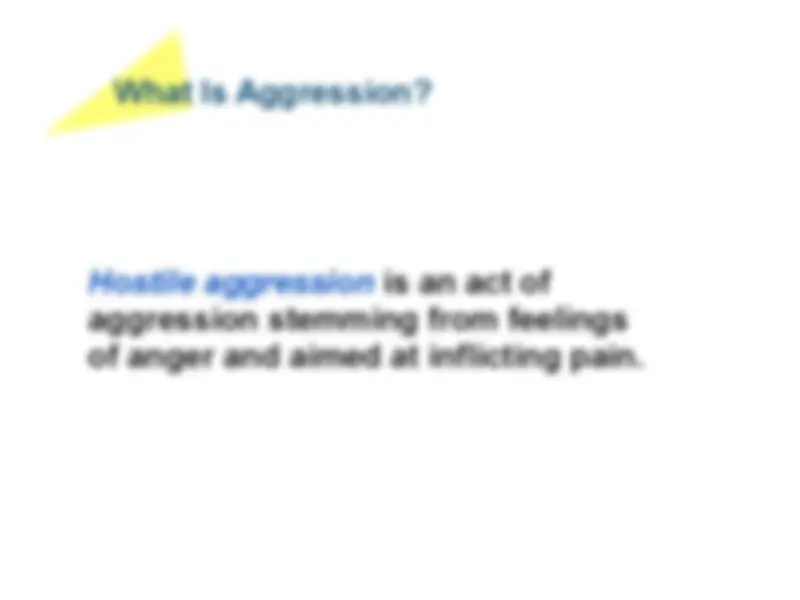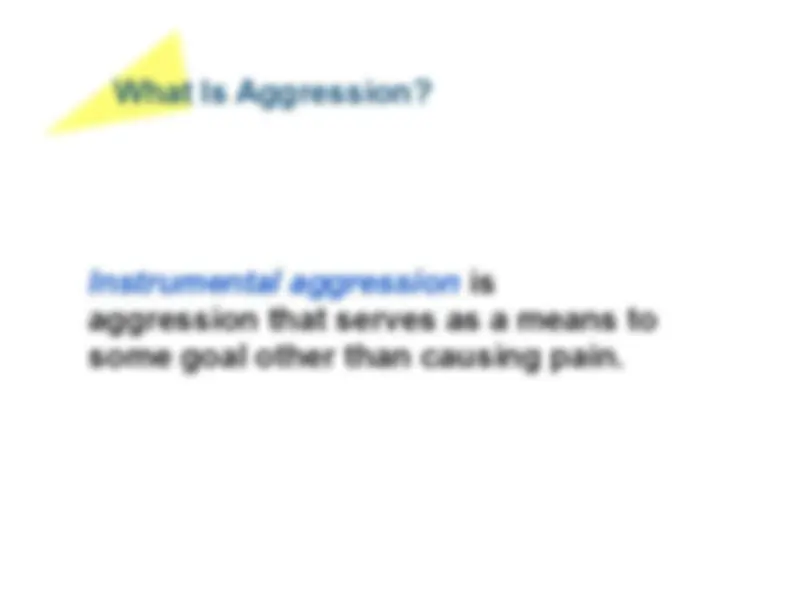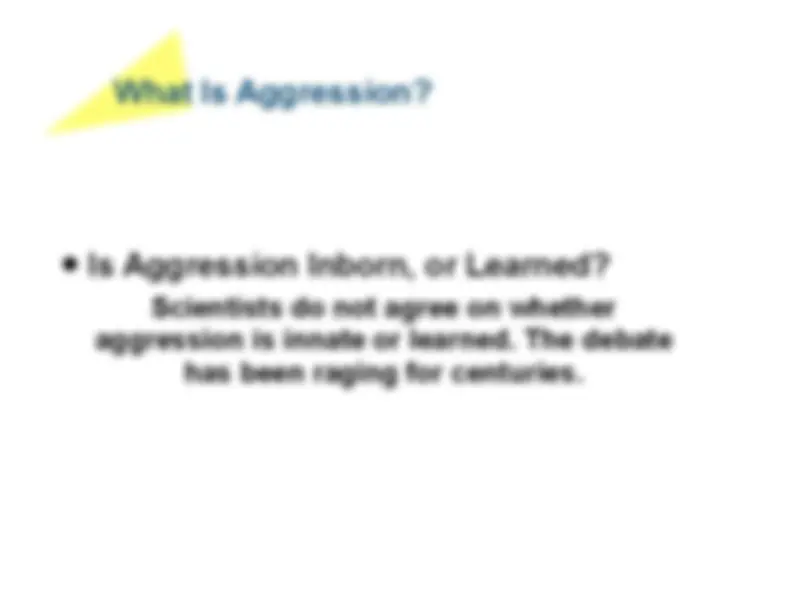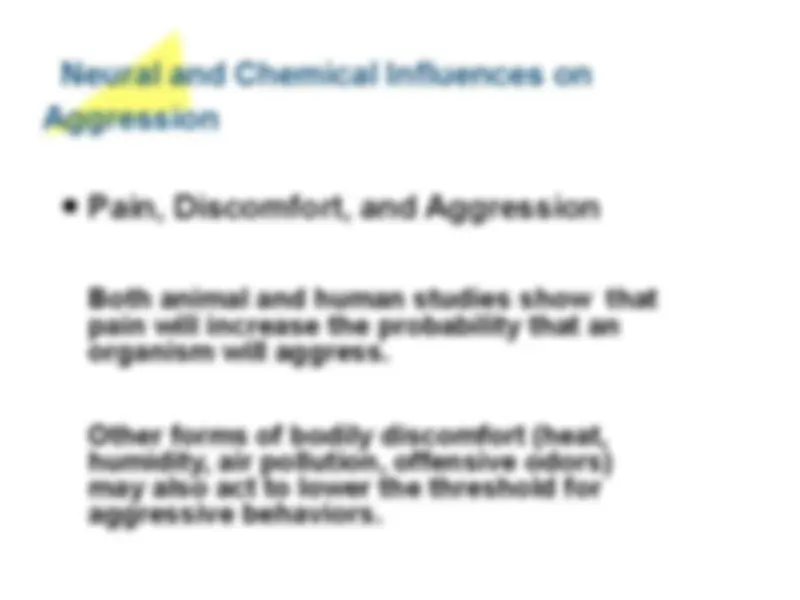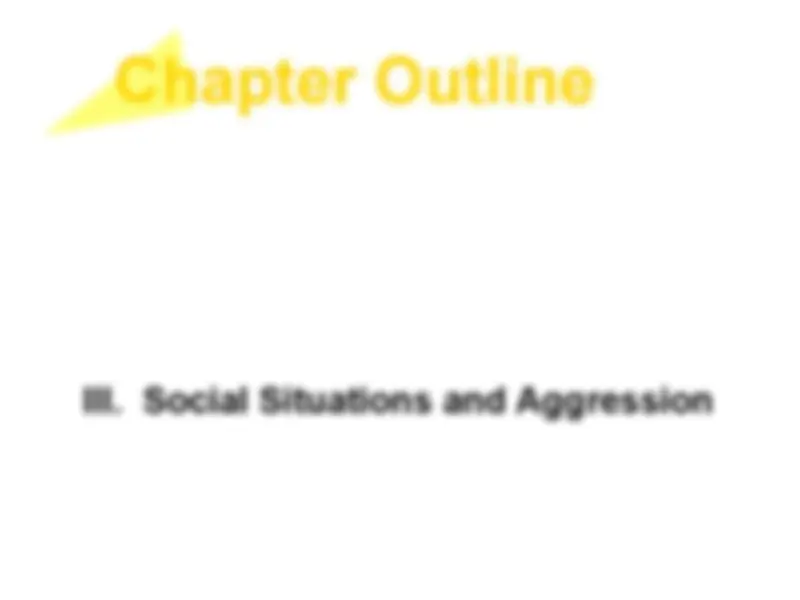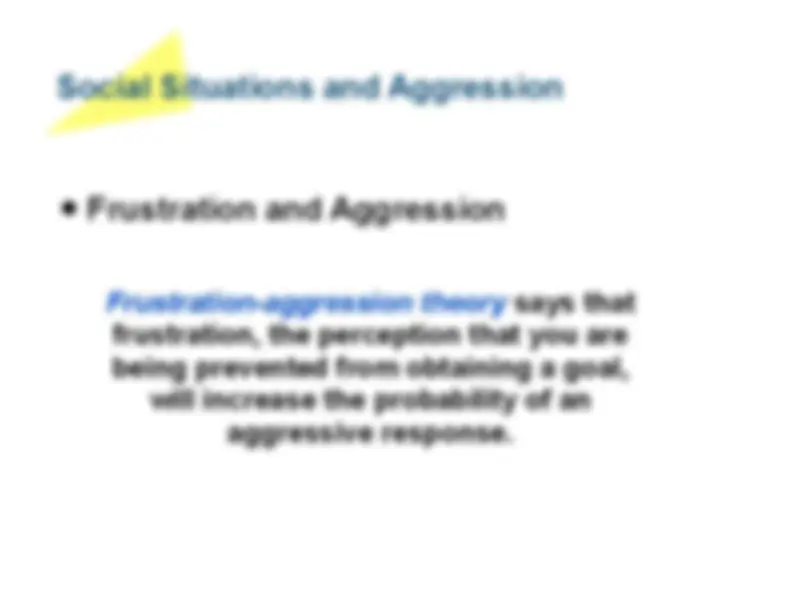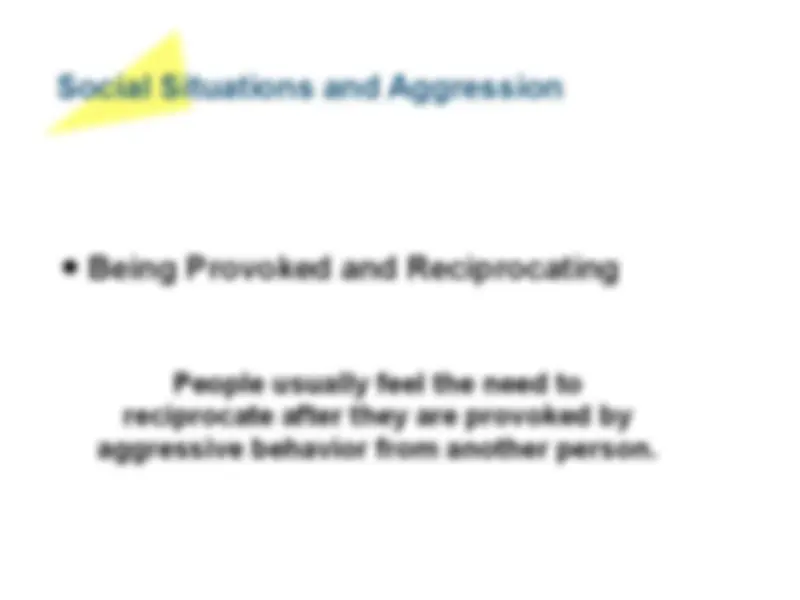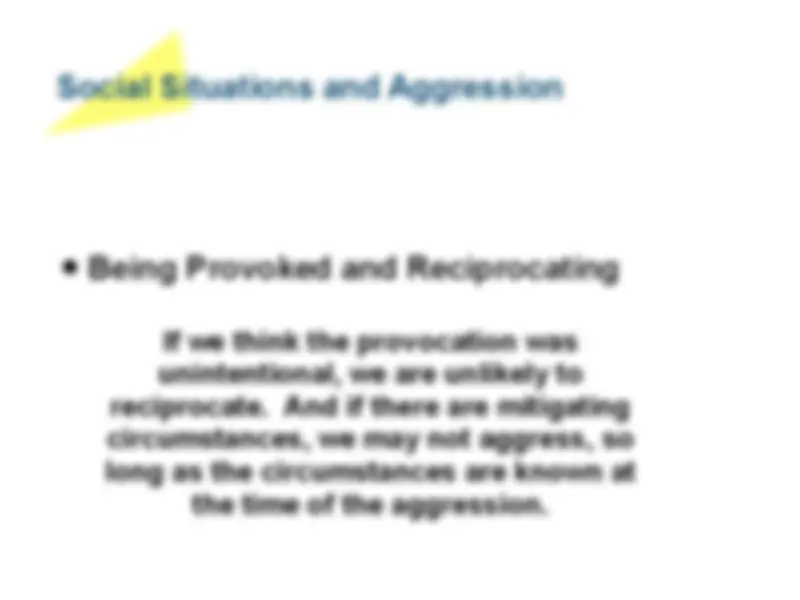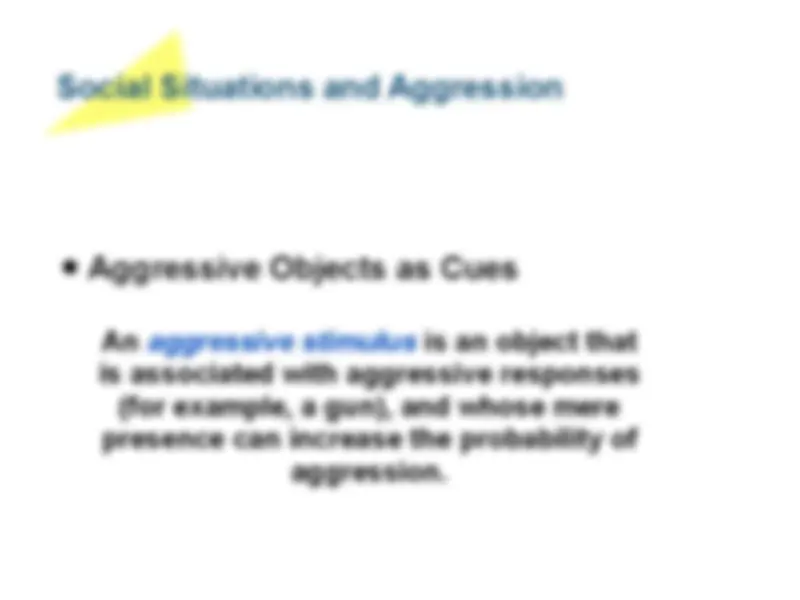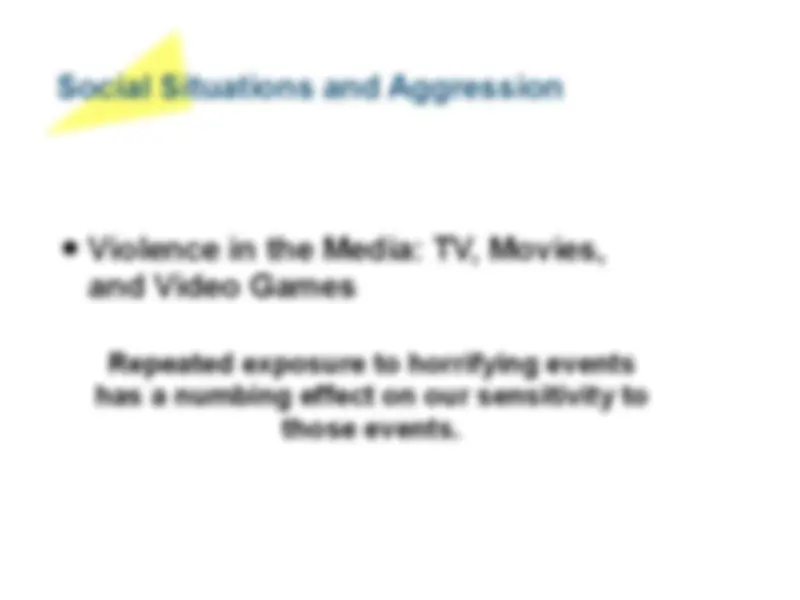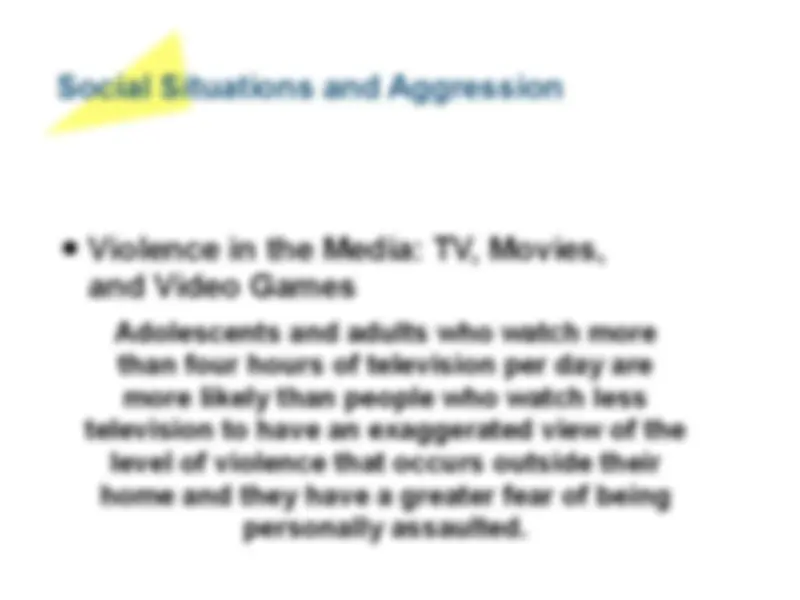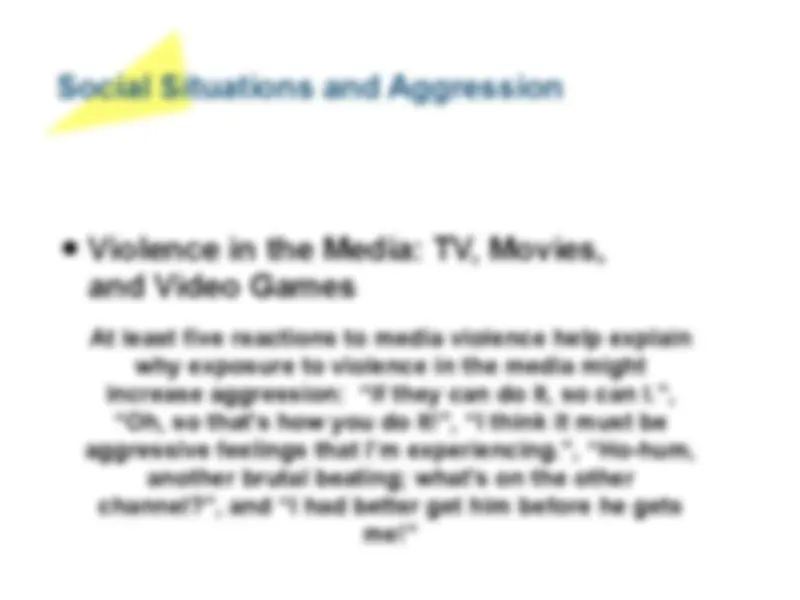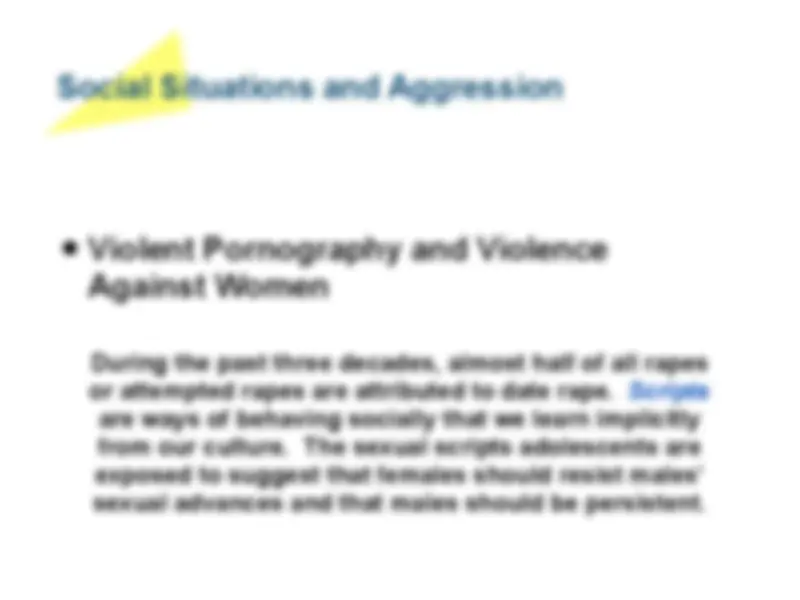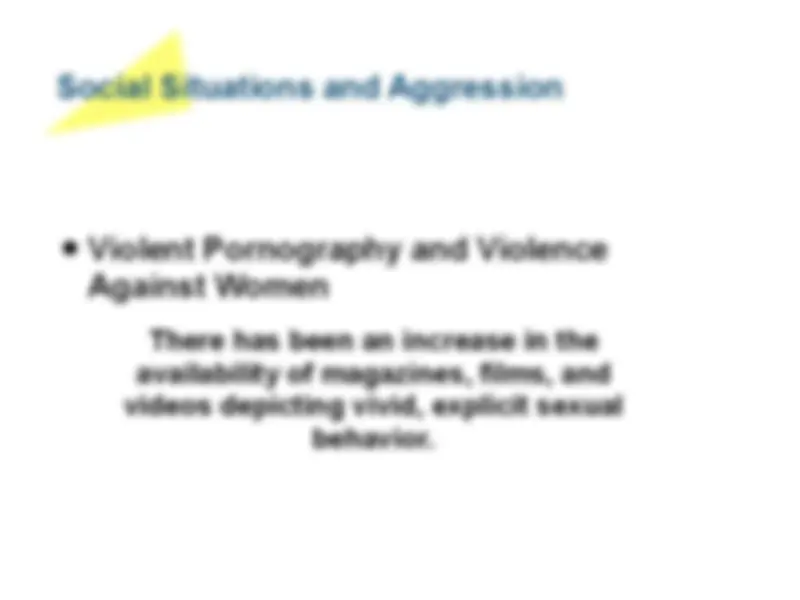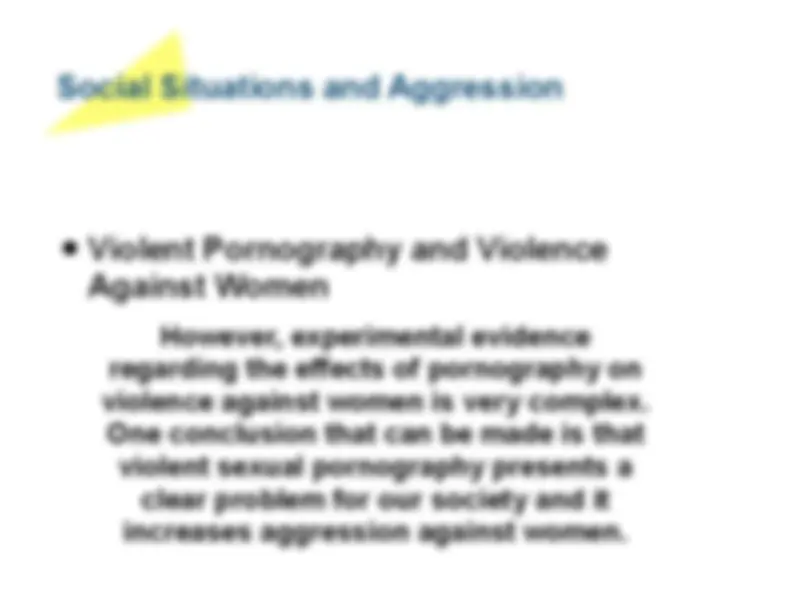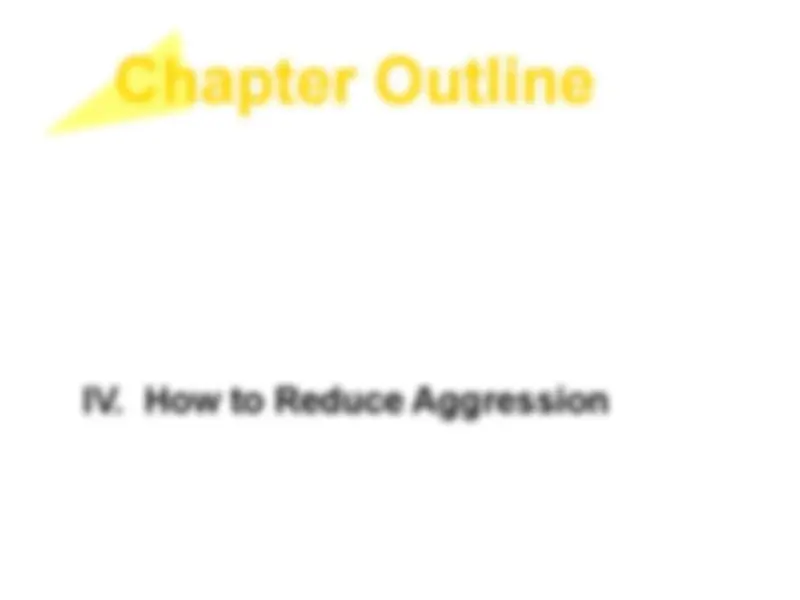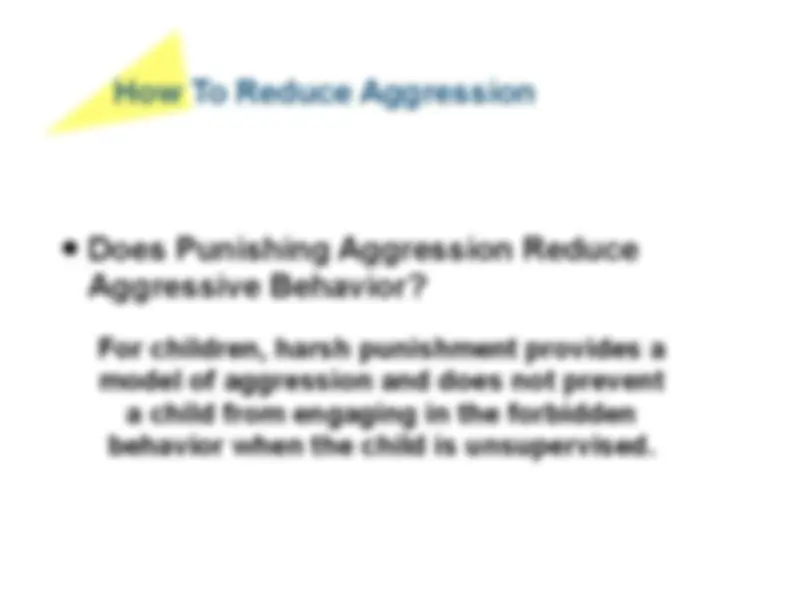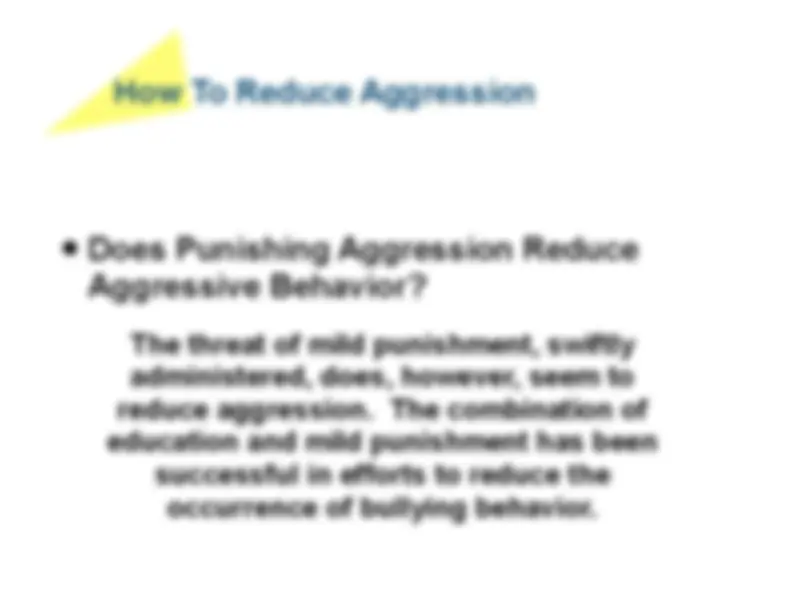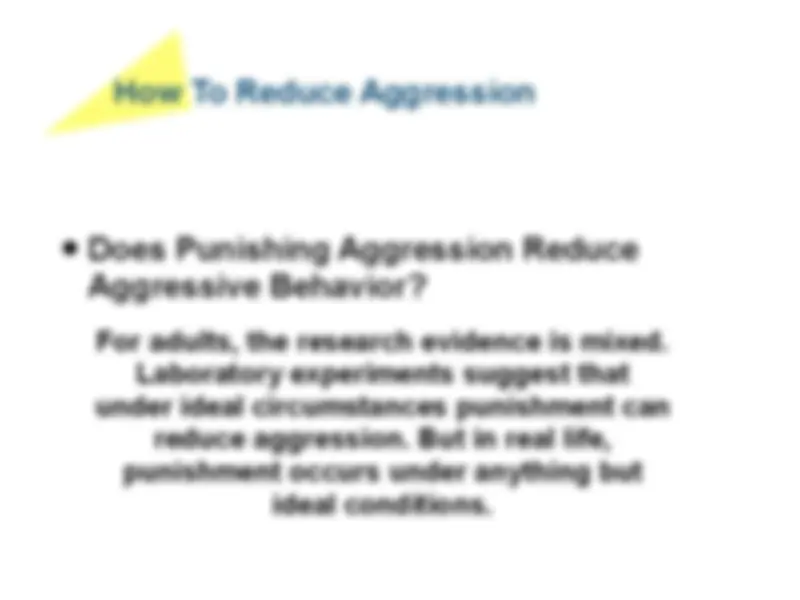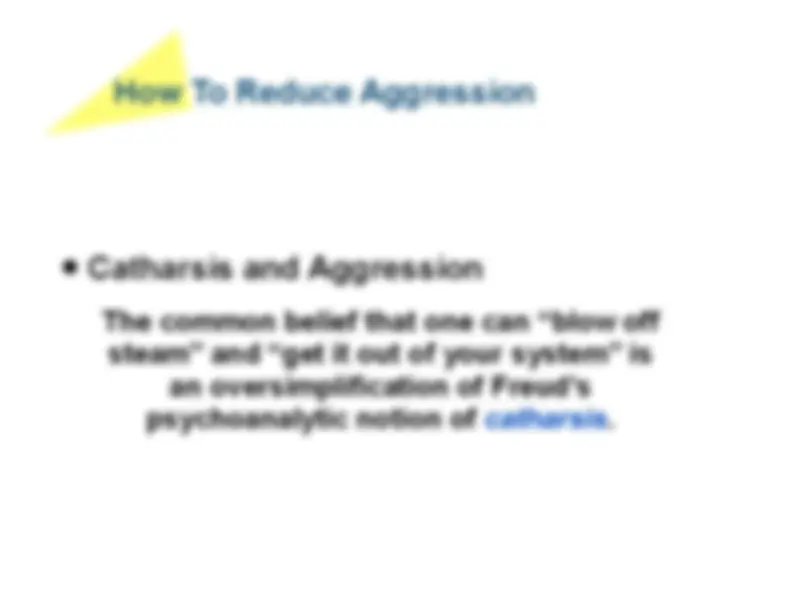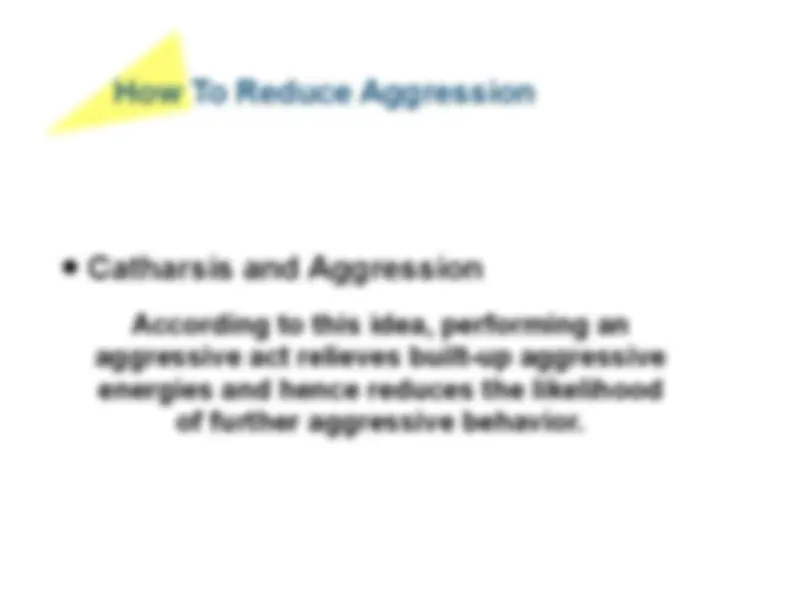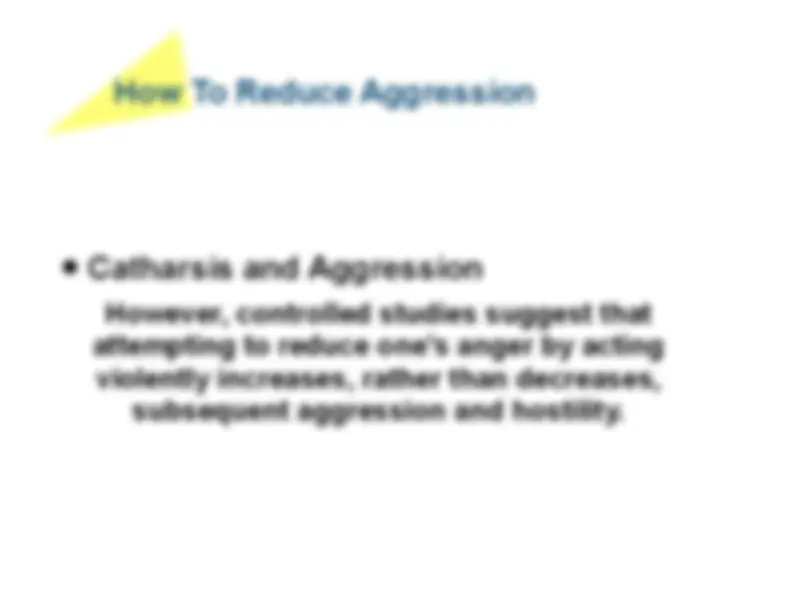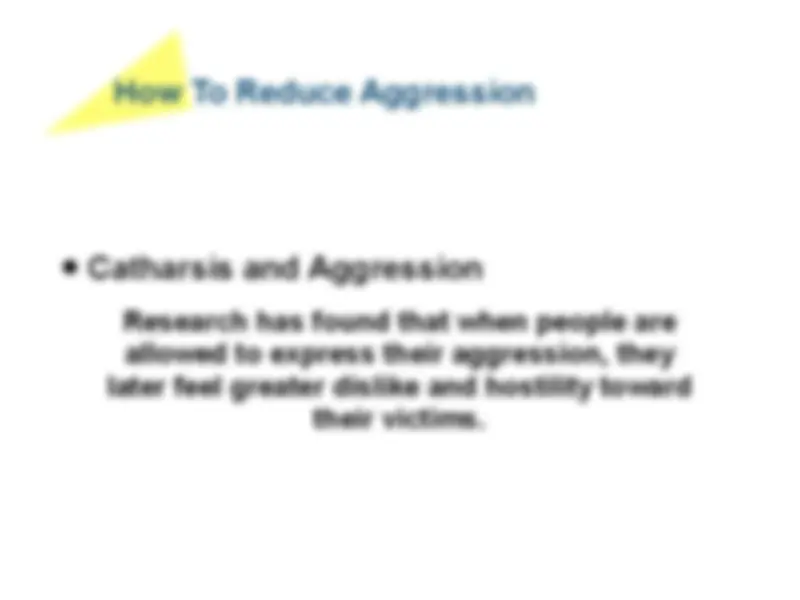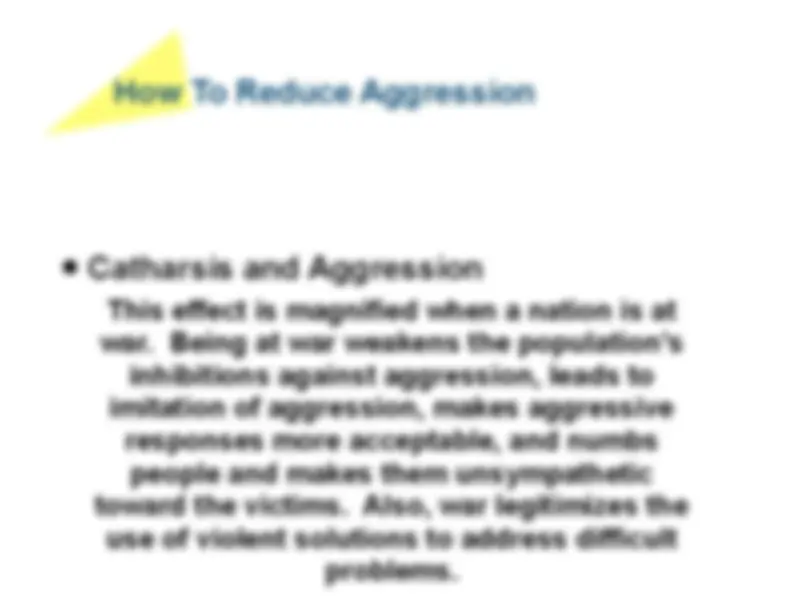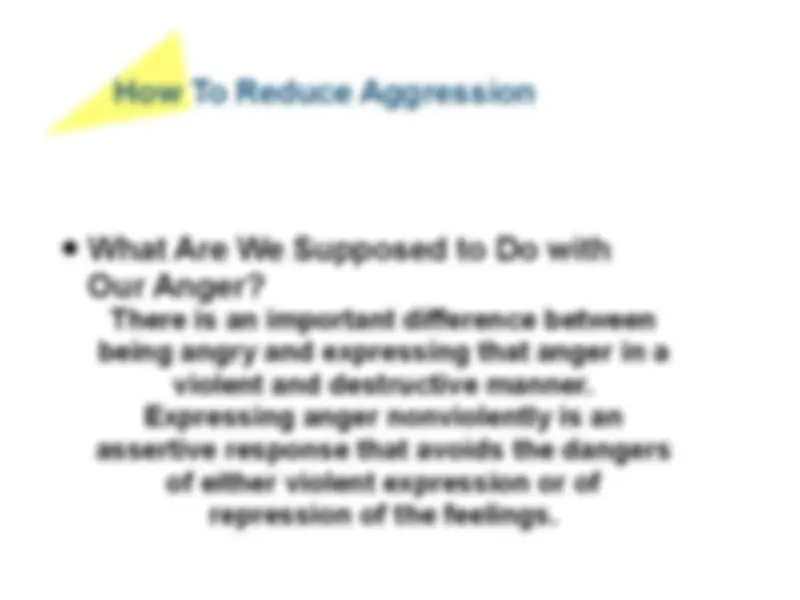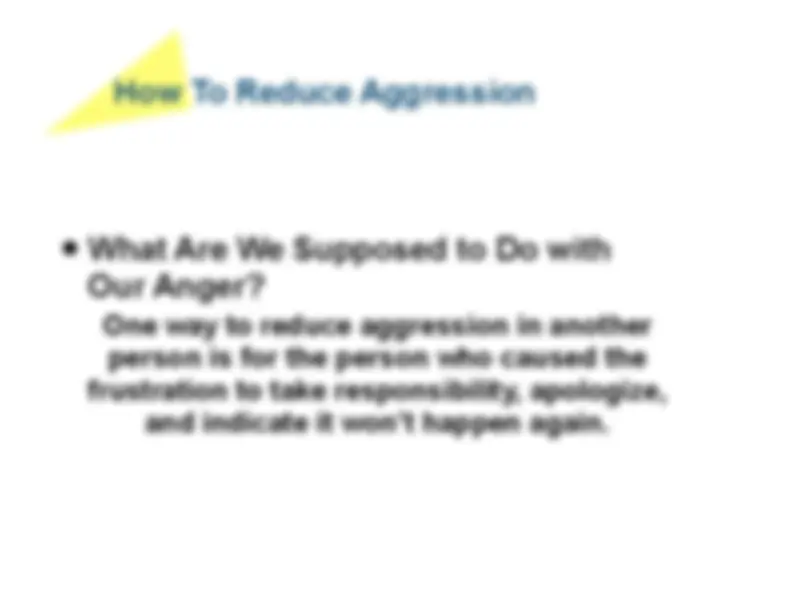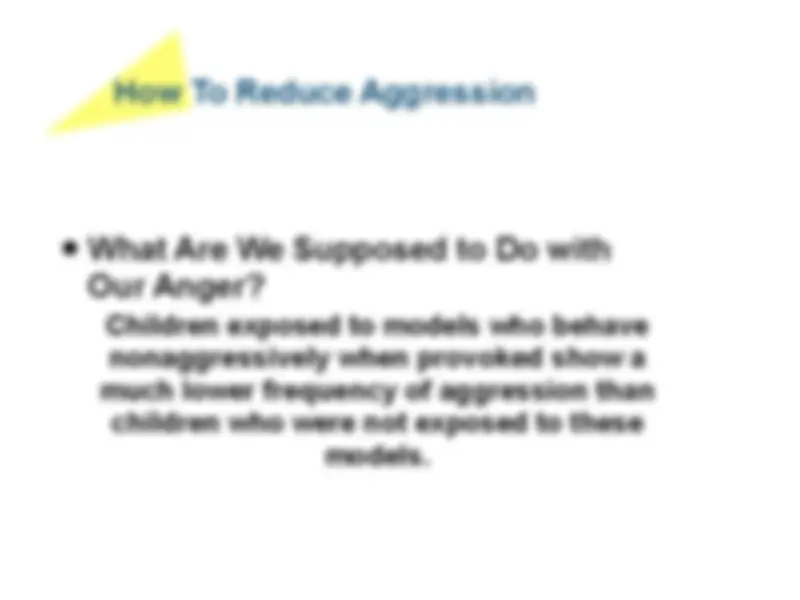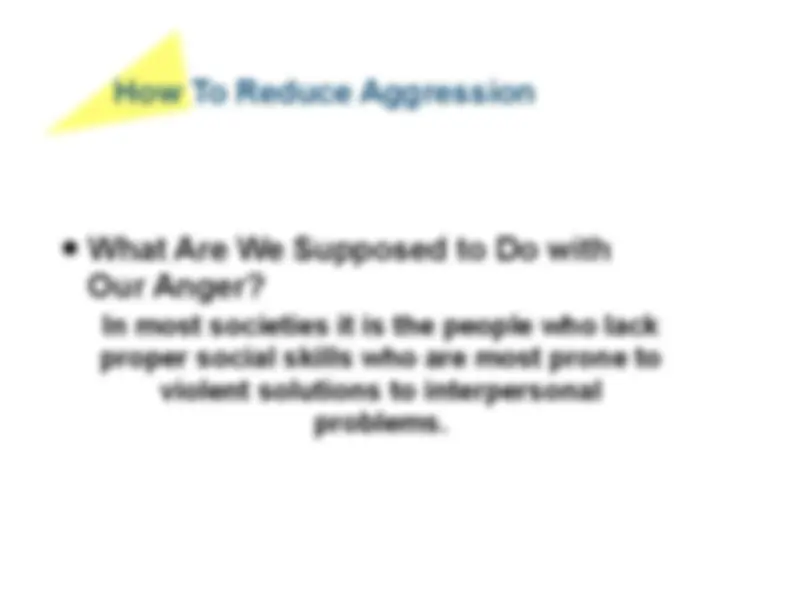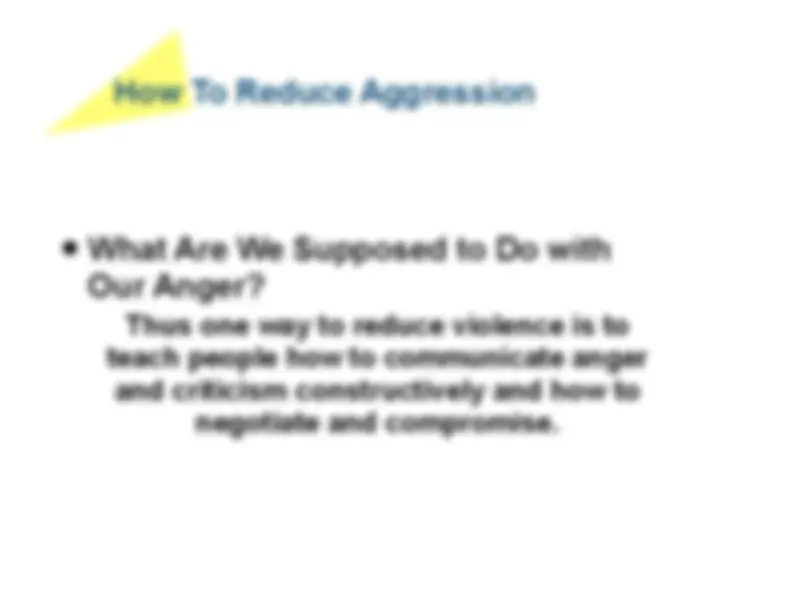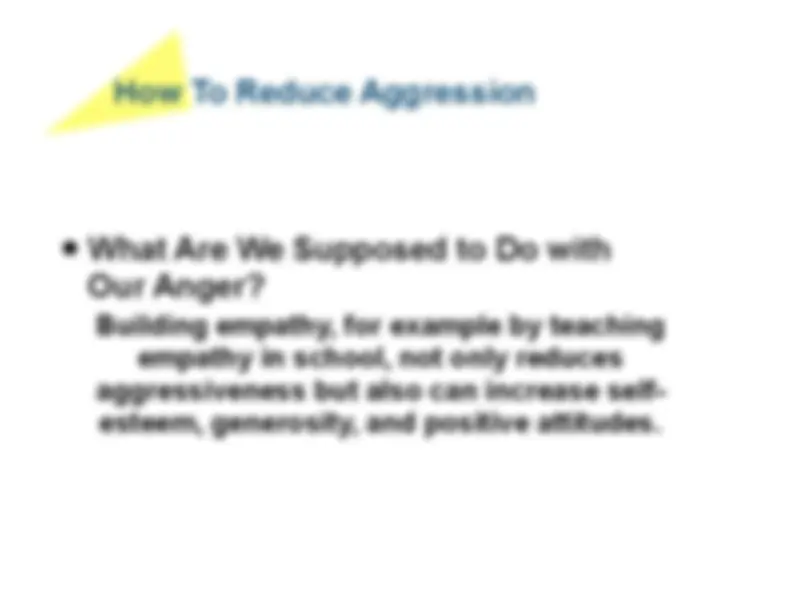Download Aggression: Why We Hurt Other People? Can We Prevent it? and more Lecture notes Acting in PDF only on Docsity!
Chapter 12
Aggression:
Why We Hurt Other
People? Can We Prevent
it?
What Is Aggression? An aggressive action is intentional behavior aimed at causing either physical or psychological pain.
What Is Aggression? Instrumental aggression is aggression that serves as a means to some goal other than causing pain.
What Is Aggression?
- Is^ Aggression Inborn, or Learned? Scientists do not agree on whether aggression is innate or learned. The debate has been raging for centuries.
What Is Aggression?
- Aggressiveness and Culture The evidence is inconclusive on whether or not aggression has an instinctual component, but it is clear that aggression can be modified by situational factors. Two examples of this are aggression among the Iroquois and the regional differences in aggressive behavior in the United States.
Neural and Chemical Influences on Aggression
- Pain, Discomfort, and^ Aggression Both animal and human studies show that pain will increase the probability that an organism will aggress. Other forms of bodily discomfort (heat, humidity, air pollution, offensive odors) may also act to lower the threshold for aggressive behaviors.
Social Situations and Aggression
- Frustration and^ Aggression Frustration-aggression theory says that frustration, the perception that you are being prevented from obtaining a goal, will increase the probability of an aggressive response.
Social Situations and Aggression
- Frustration and^ Aggression The closer someone is to a goal, the greater the frustration when one is thwarted and the higher the probability that the person will act aggressively.
Social Situations and Aggression
- Being Provoked and Reciprocating People usually feel the need to reciprocate after they are provoked by aggressive behavior from another person.
Social Situations and Aggression
- Being Provoked and Reciprocating If we think the provocation was unintentional, we are unlikely to reciprocate. And if there are mitigating circumstances, we may not aggress, so long as the circumstances are known at the time of the aggression.
Social Situations and Aggression
- Imitation and^ Aggression A major cause of aggression is social learning. Bandura and associates (1961) demonstrated social learning theory , the theory that we learn social behavior (for example, aggression) by observing others and imitating them.
Social Situations and Aggression
- Violence in the Media: TV, Movies, and Video Games A number of long-term studies indicate that the more violence individuals watch on TV as children, the more violence they exhibit years later as teens and adults.
Social Situations and Aggression
- Violence in the Media: TV, Movies, and Video Games Adolescents and adults who watch more than four hours of television per day are more likely than people who watch less television to have an exaggerated view of the level of violence that occurs outside their home and they have a greater fear of being personally assaulted.
Social Situations and Aggression
- Violence in the Media: TV, Movies, and Video Games At least five reactions to media violence help explain why exposure to violence in the media might increase aggression: “If they can do it, so can I.”, “Oh, so that’s how you do it!”, “I think it must be aggressive feelings that I’m experiencing.”, “Ho-hum, another brutal beating; what’s on the other channel?”, and “I had better get him before he gets me!”

